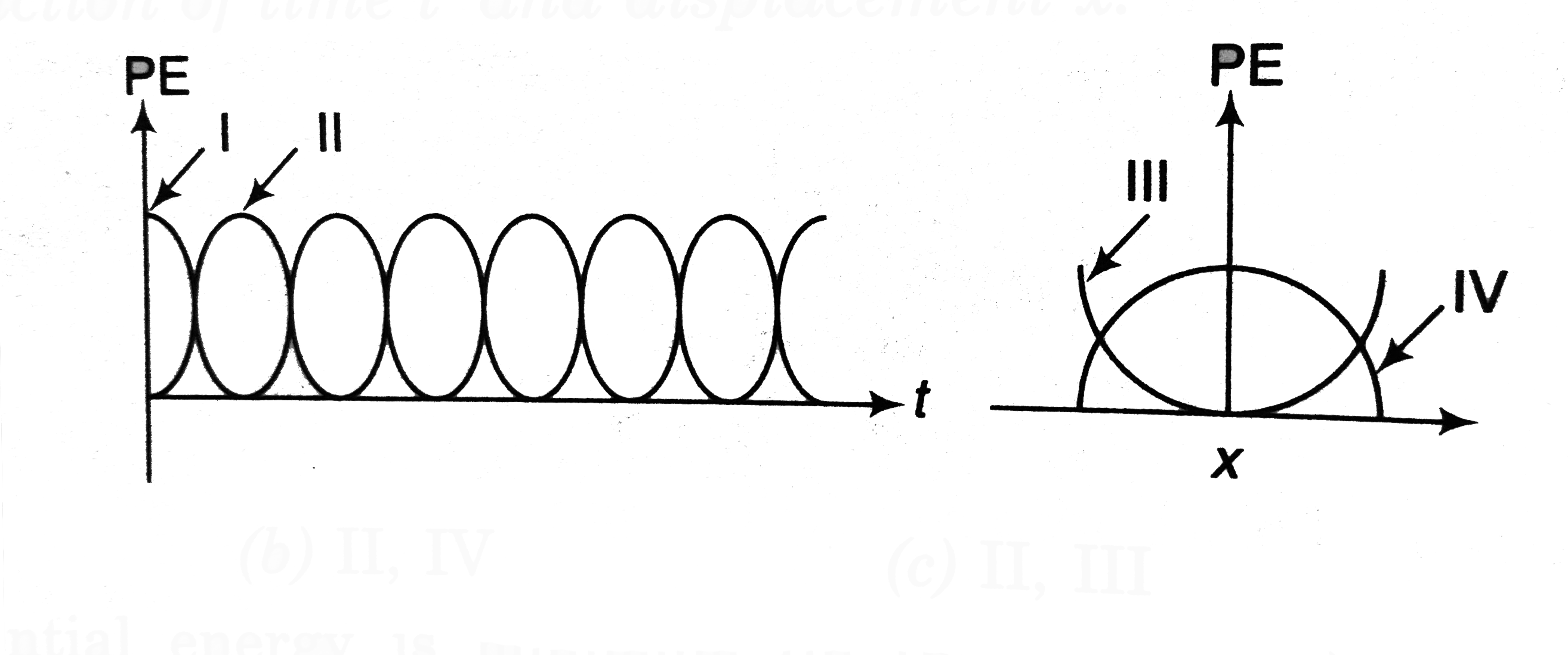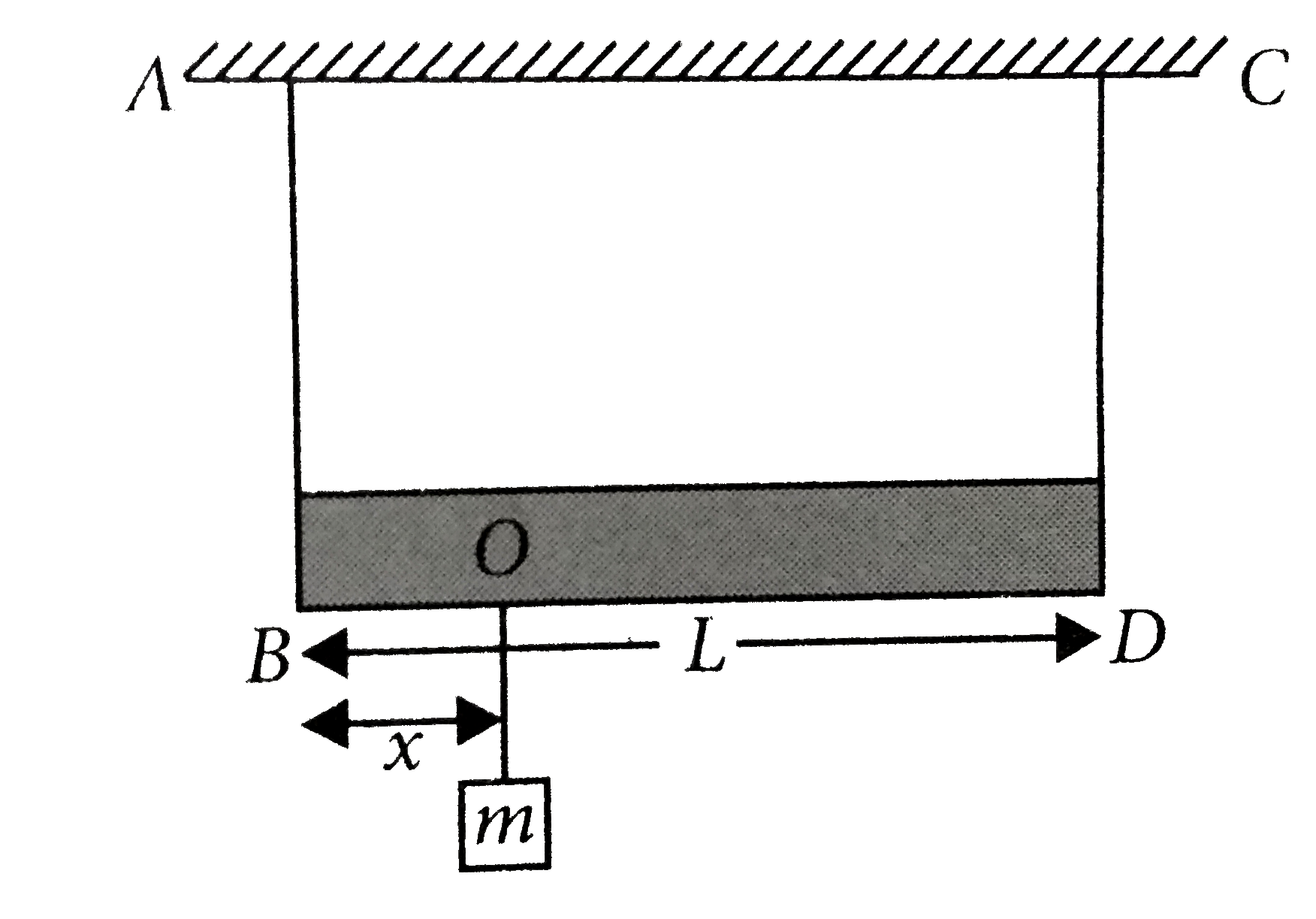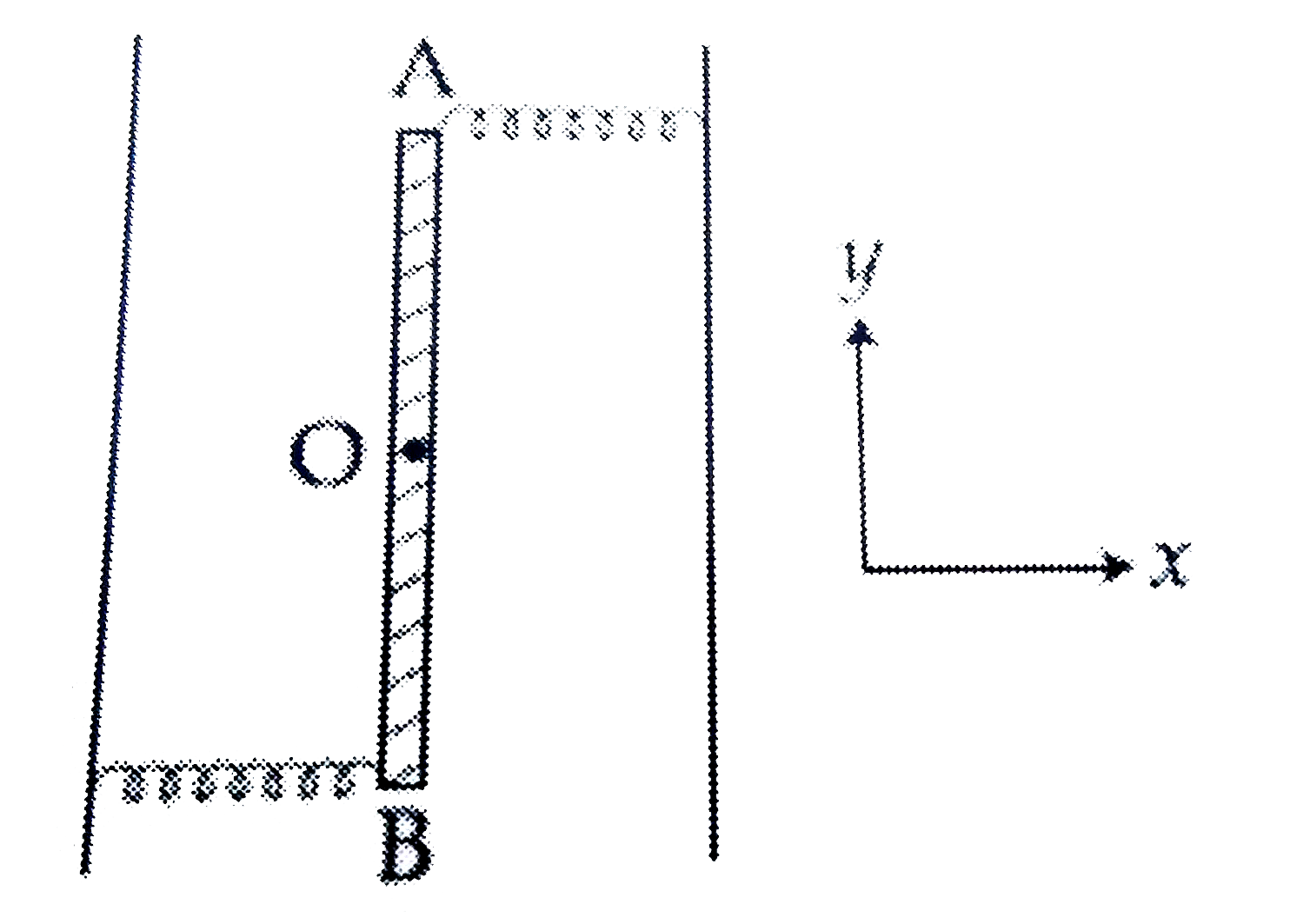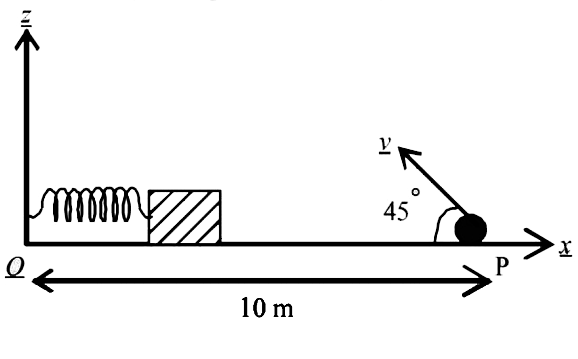Complete Solutions to Single Correct of chapter ARCHIVES 2 VOLUME 6 of Class 11 book with complete answers and questions
| Class 11 | PHYSICS |
| Chapter | ARCHIVES 2 VOLUME 6 |
| CENGAGE PHYSICS | Single Correct |
| Number Of Questions | 51 |
| Academic Year | 2023-24 |
A cylindrical tube, open at both ends, has a fundamental frequency, f, in air. The tube is dipped vertically in water so that half of it is in water. The fundamental frequency of the air-column is now
01:53View SolutionA travelling wave is described by the equation `y = y_(0) sin2 pi ((ft - (x)/lambda))`. The maximum particle velocity is equal to four times the wave velocity if
01:27View SolutionA tube closed at one end and containing air produced, when excited the fundamental note of frequency `512 H_(Z)`. If the tube is opened at both ends, the fundamental frequency that can be exited is (in `H_(Z)`)
(a) `1024` (b) `512` (c ) `256` (d) `128`01:55View SolutionA particle executes simple harmonic motion with a frequency v. The frequency with which the kinetic energy oscillates is
01:33View SolutionA wave representing by the equation `y = A cos(kx - omegat)` is suerposed with another wave to form a stationary wave such that point `x = 0` is a node. The equation for the other wave is
05:40View SolutionAn organ pipe `P_(1)` closed at one end vibrating in its first harmonic and another pipe `P_(2)` open at both ends vibrating in its third harmonic are in resonance with a given tuning fork. The ratio of the length of `P_(1)` and `p_(2)` is
(a) `8//3` (b) `3//8` (c ) `1//6` (d) `1//3`02:34View SolutionTwo bodies M and N of equal masses are suspended from two separate massless springs of spring constants `k_(1)` and `k_(2)` respectively . If the two bodies oscillate vertically such that their maximum velocities are equal, the ratio of the amplitude of vibration of M to that on N is
02:35View SolutionA uniform cylinder of length (L) and mass (M) having cross sectional area (A) is suspended, with its length vertical, from a fixed point by a massless spring, such that it is half - submerged in a liquid of density (rho) at equilibrium position. When the cylinder is given a small downward push and released it starts oscillating vertically with small amplitude. If the force constant of the spring is (k), the prequency of oscillation of the cylindcer is.
05:59View SolutionA highly rigid cubical block `A` of small mass `M` and side `L` is fixed rigidly on the other cubical block of same dimensions and of modulus of rigidity `eta` such that the lower face of `A` completely covers the upper face of `B`. The lower face of `B` is rigidly held on a horizontal surface . `A` small force `F` is applied perpendicular to one of the side faces of `A`. After the force is withdrawn , block `A` executes faces of `A`. After the force is withdrawn , block `A` exceutes small oscillations , the time period of which is given by
02:43View SolutionThe displacement of a particle in a periodic motion is given by `y=4 "cos"^(2)(t//2)"sin"(1000t)` . This displacement may be considered as the result superposition of n independent harmonic oscillations. Here , n is
00:30View SolutionOne end of a long metallic wire of length L is tied to the ceiling. The other end is tied to massless spring of spring constant k. A mass m hangs freely from the free end of the spring . The area of cross-section and Young's modulus of the wire are A and Y respectively . If the mass is slighty pulled down and released , it will oscillate with a time period T equal to
02:58View SolutionAn object of specific gravity `rho` is hung from a thin steel wire. The fundamental frequency for transverse standing waves in the wire is 300 Hz. The object is immersed in water, so that one half of its volume is submerged . The new fundamental frequency (in Hz) is
(a) 300 `((2rho-1)/(2rho))^(1/2) `
(b) `300((2rho)/(2rho-1))^(1/2)`
(c)`300((2rho)/(2rho -1))`
(d)`300 ((2rho-1)/(2rho))`04:12View SolutionThe tension in a string, obeying Hooke's law, is `x`. The speed of sound in the stretched string is `v`. If the tension in the string is increased to `1.5x`, the speed of sound will be
01:40View SolutionAn open pie is suddenly closed at one end with the result that the frequency of third harmonic of the closed pipe is found to be heigth by `100 H_(Z)` than the fundamental frequency of the open pipe. The fundamental frequency of the open pipe is
(a) `200 H_(Z)` (b) `300 H_(Z)` (c ) `240 H_(Z)` (d) `480 H_(Z)`04:45View SolutionA whistle giving out `450 H_(Z)` approaches a stationary observer at a speed of `33 m//s`. The frequency heard the observer (in `H_(Z)`) is (speed of sound `= 330 m//s`)
02:03View SolutionA travelling wave in a stretched string is described by the equation `y = A sin (kx - omegat)` the maximum particle velocity is
01:35View SolutionA string of length 0.4 m and mass `10 ^(-2)` kg is tightly clamped at its ends. The tension in the string is 1. 6 N. identical wave pulses are produced at one end at equal intervals of time `Delta t`. The value of `Delta t` which allows construction tnterference betwenn successive pulses is
04:13View SolutionA particle of mass m is executing oscillation about the origin on X- axis Its potential energy is V(x)=kIxI Where K is a positive constant If the amplitude oscillation is a, then its time period T is proportional
06:28View SolutionA particle free to move along the (x - axis) has potential energy given by `U(x)= k[1 - exp(-x^2)] for -o o le x le + o o`, where (k) is a positive constant of appropriate dimensions. Then.
04:44View SolutionThe ratio of the speed of sound in nitrogen gas to that in helium gas, at 300K is
02:19View SolutionThe period of oscillation of a simple pendulum of length (L) suspended from the roof of a vehicle which moves without friction down an inclined plane of inclination (prop), is given by.
01:58View SolutionA train moves towards a stationary observer with speed `34 m//s`. The train sound a whistle and its frequency registered by the observer by the observer is `f_(1)`. If the train's speed is reduced to `17 m//s`, the frequency registered is `f_(2)`. If the speed of sound is `340 m//s`, then the ratio `f_(1)//f_(2)` is
03:49View SolutionTwo vibrating strings of the same material but lengths L and 2L have radii 2 r and r respectively. They are strectched under the same tension. Both the strings vibrate in their fundamental modes, the one of length L with frequency `n_(1)` and the other with frequency `n_(2)`. The ratio `n_(1)//n_(2)` is given by
2
4
8
105:44View SolutionTwo pulses in a stretched string whose centres are initially 8 cm apart are moving towards each other as shown in the figure. The speed of each pulse is 2 cm/s. After 2 second, the total energy of the pulses will be
 01:36View Solution
01:36View SolutionThe ends of a stretched wire of length L are fixed at x = 0 and x = L, In one experiment, the displacement of wire is `y_(1) = A sin (pi x//L) sin omegat` and energy is `E_(1)` and in another experiment its displacement is `y_(2)= A sin (2pix//L) sin 2 omegat` and energy is `E_(2)`. Then
01:56View SolutionA particle executes S.H.M. between `x = -A` and `x = + A`. The time taken for it to go from 0 to A/2 is `T_(1)` and to go from A/2 to A is `T_(2)`. Then
03:54View SolutionA simple pendulum has a time period `T_(1)` when on the earth's surface and `T_(2)` when taken to a height R above the earth's surface, where R is the radius of the earth. The value of `(T_(2))/(T_(1))` is
01:07View SolutionA simple pendulum is oscillating without damping. When the displacement of the bob is less than maximum, its acceleration vector `veca` is correctly shown in
01:34View SolutionA siren placed at a railway platfrom is emitted sound of frequency `5 kH_(Z)`, A passenger sitting in retun journey in a different train `B` he records a frequency of `6.0 kH_(Z)` while approaching the same siren. The ratio of the velocity of train `B` to that of train `A` is
03:04View SolutionA somoneter wire resonates with a given tuning fork forming standing waves with five antindoes between the two bridges when a mass of 9 kg is suspended from the wire. Resonates with the same tuning fork forming three antindoes for the same postions of the bridges. the value of M is
02:58View Solution
A police car moving at `22(m)/(s)` chases a motorcyclist. The police man sounds his horn of frequency 176 Hz, while both of them move towards a stationary siren of frequency 165 Hz. Calculate the speed of motorcyclist if it is given that he does not hear any beat (speed of sound in air is `330(m)/(s)`)03:53View SolutionIn the experiment for the determination of the speed of sound in air using the resonance column method, the length of the air column that resonates in the fundamental mode, with a tunning fork is `0.1m` . When this length is changed to `0.35m`, the same tunning fork resonates with the first overtone. calculate the end correction.
(a) `0.012 m`
(b) `0.025 m`
( c) `0.05 m`
(d) `0.024 m`04:47View SolutionFor a particle executing SHM, the displacement `x` is given by `x = A cos omegat`. Identify the graph which represents the variation of potential energy `(PE)` as a function of time `t` and displacement `x`.

(a) `I, III`
(b) `II, IV` (c ) `II, III`
(d) `I, IV`03:43View SolutionA source of sound of frequency 600Hz is placed inside of water. The speed of sound is water is `1500m//s` and air it is `300m//s`. The frequency of sound recorded by an observer who is standing in air is
02:18View SolutionA pipe of length `l_(1)`, closed at one end is kept in a chamber of gas of density `rho_(1)`. A second pipe open at both ends is placed in a second chamber of gas of density `rho_(2)`. The compressibility of both the gases is equal. Calculate the length of the second pipe if frquency of first overtone in both the cases is equal.
05:30View SolutionIn a resonance tube with tuning fork of frequency `512 Hz`, first resonance occurs at water level equal to `30.3cm` and second resonance ocuurs at `63.7cm`. The maximum possible error in the speed of sound is
05:01View SolutionAn open pipe is in resonance in `2nd` harmonic with frequency `f_(1)`. Now one end of the tube is closed and frequency is increased to `f_(2)` such that the resonance again ocuurs in `nth` harmonic. Choose the correct option
03:32View SolutionA simple pendulum has time period `T_1`. The point of suspension is now moved upward according to the relation `y = Kt^2`. (`K= 1 m s^(-2)`) where y is the vertical displacement. The time period now becomes `T_2`
The ratio of `T_1^2/T_2^2`(Take `g = 10 m s^(-2)`)03:14View SolutionA massless rod of kngth L is suspended by two identical strings AB and CD of equal length. A block of mass m is suspended from point O such that BO is equal to 'x'. Further it is observed that the frequency of `1_(st)` harmonic in AB is equal to `2_(nd)` harmonic frequency in CD, 'x' is
 03:30View Solution
03:30View SolutionIn the experiment to determine the speed of sound using a resonance column,
03:40View SolutionA transverse sinusoidal wave moves along a string in the positive x-direction at a speed of `10cm//s`. The wavelength of the wave is 0.5 m and its amplitude is `10 cm`. At a particular time t,the snapshot of the wave is shown in figure. The velocity of point P when its displacement is 5 cm is

(a) `sqrt(3pi)/(50)hatjm//s`
(b)`-sqrt(3pi)/(50)hatjm//s`
(c)`sqrt(3pi)/(50)hatim//s`
(d) `-sqrt(3pi)/(50)hatim//s`05:09View SolutionA vibrating string of certain length `l` under a tension `T` resonates with a mode corresponding to the first overtone (third harmonic ) of an air column of length `75 cm` inside a tube closed at one end. The string also generates `4 beats//s` with a tuning fork of frequency `n` . Now when the tension of the string is slightly increased the number of beats reduces to `2` per second. Assuming the velocity of sound in air to `340 m//s` , the frequency `n` the tuning fork in `H_(Z)` is
(a) `344`
(b) `336`
(c ) `117.3`
(d) `109.3`06:44View SolutionA block `(B)` is attached to two unstriched sprig `S_(1)` and `S_(2)` with spring constant `K` and `4K` , respectively (see fig 1) The other ends are atteched in identical support `M_(1)` and `M_(2)` not attached in the walls . The springs and supports have negligible mass . There is no friction anywhere . The block `B` is displaced toword wall `1` by a small distance `x` (figure (ii)) and released . The block return and moves a maximum distance y towards wall 2.Displacements x and y are measured w.r.to the equalibrum of the block `B` and the ratio `y//x` is
 05:10View Solution
05:10View SolutionThe acceleration a of a particle undergoing SHM is shown in the figure. Which of the labelled points corresponds to the particle being at `-x_("max")`
 00:40View Solution
00:40View Solutiontwo light identical springs of spring constant K are attached horizontally at the two ends of a uniform horizontal rod AB of length l and mass m. the rod is pivoted at its centre 'o' and can rotate freely in horizontal plane . The other ends of the two springs are fixed to rigid supportss as shown in figure . the rod is gently pushed through a small angle and released , the frequency of resulting oscillation is :
 06:38View Solution
06:38View SolutionA hollow pipe of length `0.8m` is closed at one end. At its open end a `0.5 m` long uniform string is vibrating in its second harmonic and it resonates with the fundamental frequency of the pipe. If the tension in the wire is `50 N` and the speed of sound is `320 ms^(-1)`, the mass of the string is
03:16View SolutionTwo monatomic ideal gas 1 and 2 of molecular masses `m_(1) and m_(2)` respectively are enclosed in separate containers kept at same temperature. The ratio of the speed of sound in gas 1 to that in gas 2 is given by
03:27View SolutionA police car with a siren of frequency `8 KHz` is moving with uniform velocity `36 Km//hr` towards a ball building which reflects the sound waves. The speed of sound in air is `320 m//s`. The frequency of the siren heard by the car driver is
07:05View SolutionA point mass is subjected to two simultaneous sinusoidal displacements in `x - direction, x_1 (t) = A sin (omega)t and x_2 (t) = A sin ((omega t + (2 pi)/(3))`. Adding a third sinusoidal displacement `x _3 (t) = B sin (omega t + phi)` brings the mas to a complete rest. The values of (B) and (phi) are.
04:49View SolutionA small block is connected to one end of a massless spring of un - stretched length `4.9 m`. The other end of the spring (see the figure) is fixed. The system lies on a horizontal frictionless surface. The block is stretched by `0.2 m` and released from rest at `t = 0`. It then executes simple harmonic motion with angular frequency `(omega) = (pi//3) rad//s`. Simultaneously at `t = 0`, a small pebble is projected with speed (v) from point (P) at an angle of `45^@` as shown in the figure. Point (P) is at a horizontal distance of `10 m from O`. If the pebble hits the block at `t = 1 s`, the value of (v) is `(take g = 10 m//s^2)`.
 .03:56View Solution
.03:56View SolutionA student is performing the experiment of resonance column. The diameter of the column tube is `4 cm`. The frequency of the tuning fork is `512 Hz` The air temperature is `38.^(@) C` in which the speed of sound is `336 m//s`. The zero of the meter scale coincides with the top end of the resonance column tube. When the first resonance occurs, the reading of the water level in the column is.
(a) `14.0 cm`
(b) `15.2 cm`
( c) `6.4 cm` (d) `17.6 cm`.04:19View Solution
Single Correct questions and complete solutions for chapter ARCHIVES 2 VOLUME 6 of CENGAGE PHYSICS (ENGLISH) of Class 11
